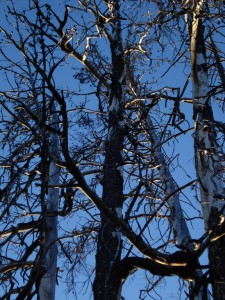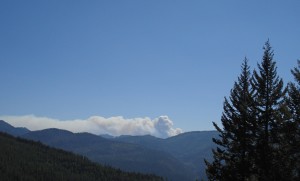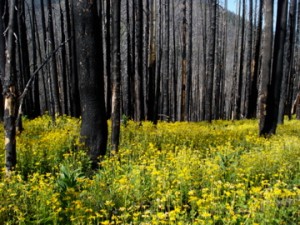Uncategorized
Book Review: Young Men and Fire

I read a lot more in the summer. Long evenings in the tent lend themselves to getting lost in a book much more than evenings working on a map in front of a computer. Last night I finally finished Norman Maclean’s Young men and Fire. I started it while there were still several fires going strong around here which must have inspired me to pull it off the shelf. The fires have died down now (thank goodness) but I’ve been thinking a lot about them and their influence on the landscape here.
If you haven’t read it, Young Men and Fire is a detailed account of the Mann Gulch Fire, which burned about twenty-five miles outside of Helena in 1949. Thirteen people died in the fire, twelve smoke jumpers and the ranger who met them on the ground. Only three smoke jumpers survived. Maclean saw the aftermath of the fire firsthand which must have planted the seed that lead him to return to study the fire in detail decades later. He spent several years piecing together the events and decisions that led to the fire fighter’s deaths. The book, found in Maclean’s desk and published after his death, is a compilation of his conversations with the survivors and countless visits to the scene of the fire as well as research into the science and mathematics of wild fires.
In addition to being an explanation of the tragedy at Mann Gulch, the book is an account of Maclean coming to terms with old age. Researching the fire was the project that kept Maclean busy in the last years of his life. He writes about how the mental challenge of understanding the technical aspects of fires, as well as the physical challenge of getting to and hiking around Mann Gulch kept him strong and engaged.

I think most people, especially those unfamiliar with wild fire find a post-burn landscape overwhelming. Silvery dead trees as far as you can see distract from the continuity of a green landscape. When Jamie and I were working in Yellowstone one friend of a friend described the park, post-1988 fires as “hell on earth.” Unlike most processes that shape the landscape, fire’s effects are immediately visible, measured in overnight transformations rather than centuries of imperceptible change. To me the post-fire landscape is much easier to look at on a macro scale. The patterns revealed in silvery wood, the flowers or the the curling of smaller branches into spirals. When I turn my eyes to detail, I’m less overwhelmed by the big picture.

There were several fires in the Bob Marshall and around Missoula this past summer. One afternoon in August while Jamie and I ate lunch on top of Green Mountain we noticed a couple wisps of smoke drifting up towards the clouds over near the South Fork. We didn’t think much of it and headed down. About an hour later we came around the ridge to head down Trail Creek and the wisps had turned into giant mushrooming pillars of smoke towering over the landscape. Those were the initial runs of the Hammer Creek and the Big Salmon Fires which burned over eleven thousand acres in August and September.
I hadn’t read a book by Norman Maclean since my freshmen year of college when the “west” was still a conceptual landscape to me. Even after five summers in Montana I still think about wild fire in the abstract; big clouds on the horizon and hazy mornings in the valleys. Reading Young Men and Fire in the context of the landscape where it takes place was an entirely different experience from that introductory literature class. I’m still relatively new to a fire-shaped ecosystem and Young Men and Fire made fires a little more real for me and taught me a lot about what’s happening underneath those big mushroom clouds.

